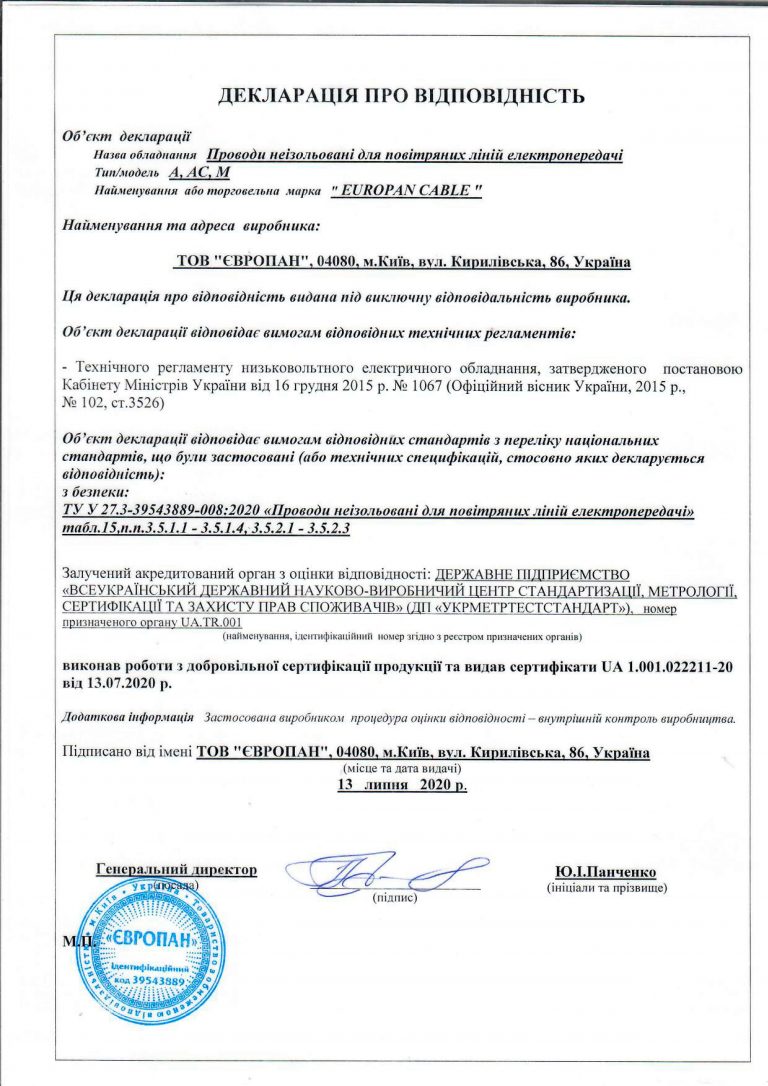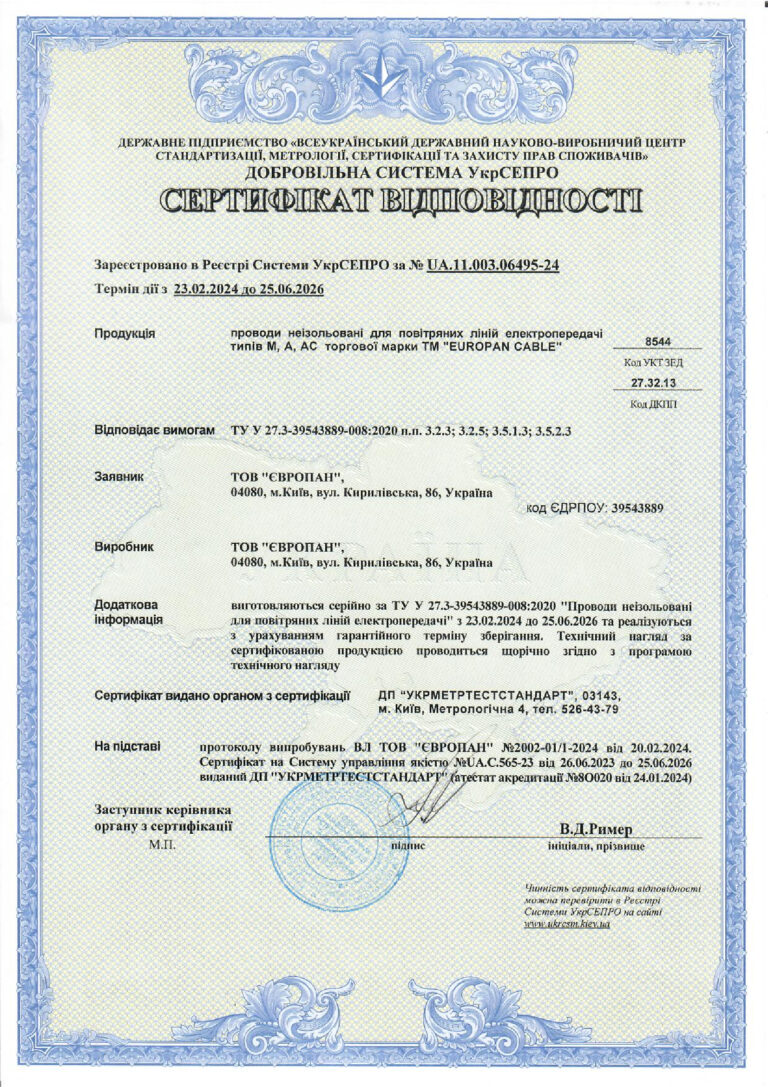
M
- M is an uninsulated copper wire, consisting of one or stranded of several copper wires.
- It is designed for the transmission of electrical energy in the overhead electrical networks.
The long-term permissible temperature of the wires during operation should not exceed 90°С
M – copper (the conductor is single-wire or multi-wire, stranded form the copper wires).
| Conductors: copper single-wire or multi-wire |
| Insulation: no |
| Armor: no |
M is a bare copper wire. It has one of the highest electrical conductivity, high elasticity and mechanical strength.
Applicability scope
Bare wire M is intended for the transmission of electrical energy in overhead electrical networks in the atmosphere of air of types III and II on land and sea in all macroclimatic regions. It can also be used as a conductor of the electric current in conductive and distribution segments in the stationary electrical installations.
In the normal atmospheres, copper is highly resistant to corrosion. The copper conductor is characterized by rather slow oxidation, as a result of which it becomes covered with a thin oxide film. The oxide film does not interfere with the passage of current, protects the wire from further destruction and is well resistant to the chemical attack of various substances. All this makes copper products an ideal choice when laying power lines. But it should be remembered that certain impurities in the atmosphere can cause increased corrosion of this metal. For example, sulfur dioxide, nitrogen oxide, hydrogen sulfide, chlorine, acids and other substances. In this regard, it is not advisable to use copper wires in a highly aggressive environment and on the coast of the seas.
In addition, due to the scarcity of non-ferrous metals, copper is used most often in difficult conditions where increased conductivity and corrosion resistance are required. It is for this reason, in contrast to the wires of the A and AS brands, the M wires have not become widely used when laying overhead power lines. They require a special feasibility study.
Design
Structurally, the M wire can consist of one round copper wire. Or it can be stranded from several copper wires, with a cross-section from 4 to 400 mm2. Solid wires are cheaper, but they are less flexible and has the lower mechanical strength.
Multi-wire conductors are stranded with the correct twist. There is one wire in the center of the section, and the wires of the second twist are wound concentrically around it. At the same time, the number of wires for each next layer increases. The twisting of the adjacent layers is made in opposite directions, and the outer layer has the right direction of twisting, which prevents the wire from unwinding. With an increase in the cross-section, the number of twisting wires also increases.
For more detailed information on the technical parameters: the number of wires in the wire, their nominal diameter, the number of twists, as well as the construction length of the wires, you can check with the managers of EUROPAN LLC by calling the phones indicated on the website.
Operation
Uninsulated M brand wire is used at temperatures from -60°C to +50°C. The radius of its bending during installation, as well as of the wire installed on the supports, is at least 10 outer diameters of the wire.
The main characteristics of the M wire are its ability to withstand the heating temperature during operation up to +90°С for a long time and a long service life, which is at least 45 years. The guaranteed service life is 4 years.
Uninsulated copper wire of the M brand is a very common conductor for overhead power lines, and its higher cost, compared to aluminum, is fully compensated for by the efficiency. EUROPAN LLC has been a manufacturer of various cable and wire products for many years. Here you can select and buy bare wires for overhead lines from stock and custom-built. And the sales managers will advise you on all questions regarding design and technical parameters as well as offer the most favorable prices and delivery terms.
Select rated voltage, kV
|
Nominal cross-section, mm2 |
Outer diameter, mm |
Weight of 1 km of wire, kg | Electrical resistance of 1 km of wire to direct current at 20 °С, Ohm, no more than | Breaking strength of the wire, N, not less than |
| 4,0 | 2,2 | 35,0 | 4,6009 | 1661 |
| 6,0 | 2,8 | 52,0 | 3,0701 | 2467 |
| 10 | 3,6 | 88,0 | 1,8197 | 3881 |
| 16 | 5,1 | 142,0 | 1,1573 | 6031 |
| 25 | 6,4 | 224,0 | 0,7336 | 9463 |
| 35 | 7,5 | 311,0 | 0,5238 | 13141 |
| 50 | 9,0 | 444,0 | 0,3688 | 17455 |
| 70 | 10,7 | 612,0 | 0,2723 | 27115 |
| 95 | 12,6 | 850,0 | 0,1944 | 37637 |
| 120 | 14,0 | 1058,0 | 0,1560 | 46845 |
| 150 | 15,8 | 1338,0 | 0,1238 | 55151 |
| 185 | 17,6 | 1659,0 | 0,1001 | 73303 |
| 240 | 19,9 | 2124,0 | 0,0789 | 93837 |
| 300 | 22,1 | 2614,0 | 0,0637 | 107422 |
| 350 | 24,2 | 3071,0 | 0,0530 | 128827 |
| 400 | 25,6 | 3528,0 | 0,0471 | 14498 |






